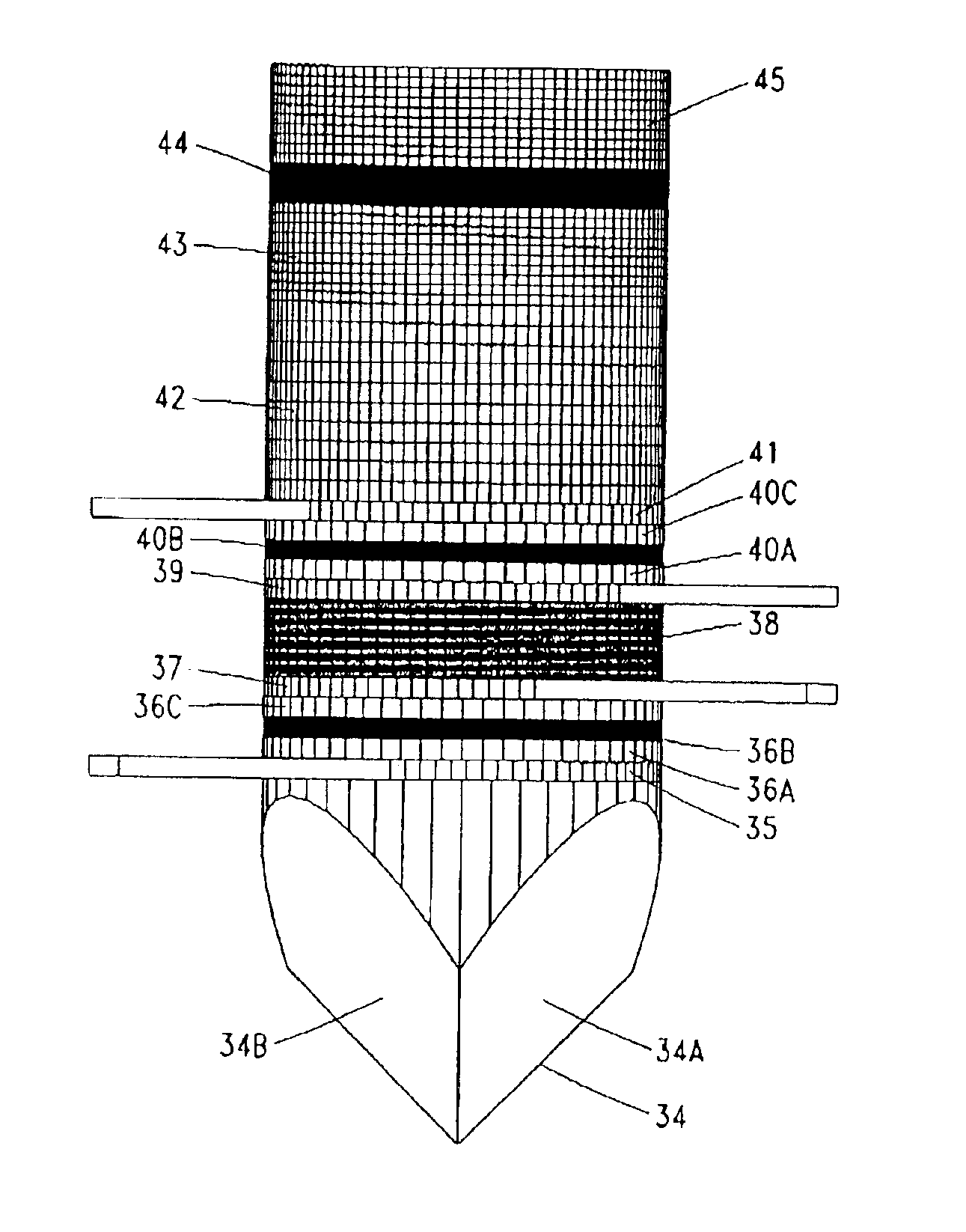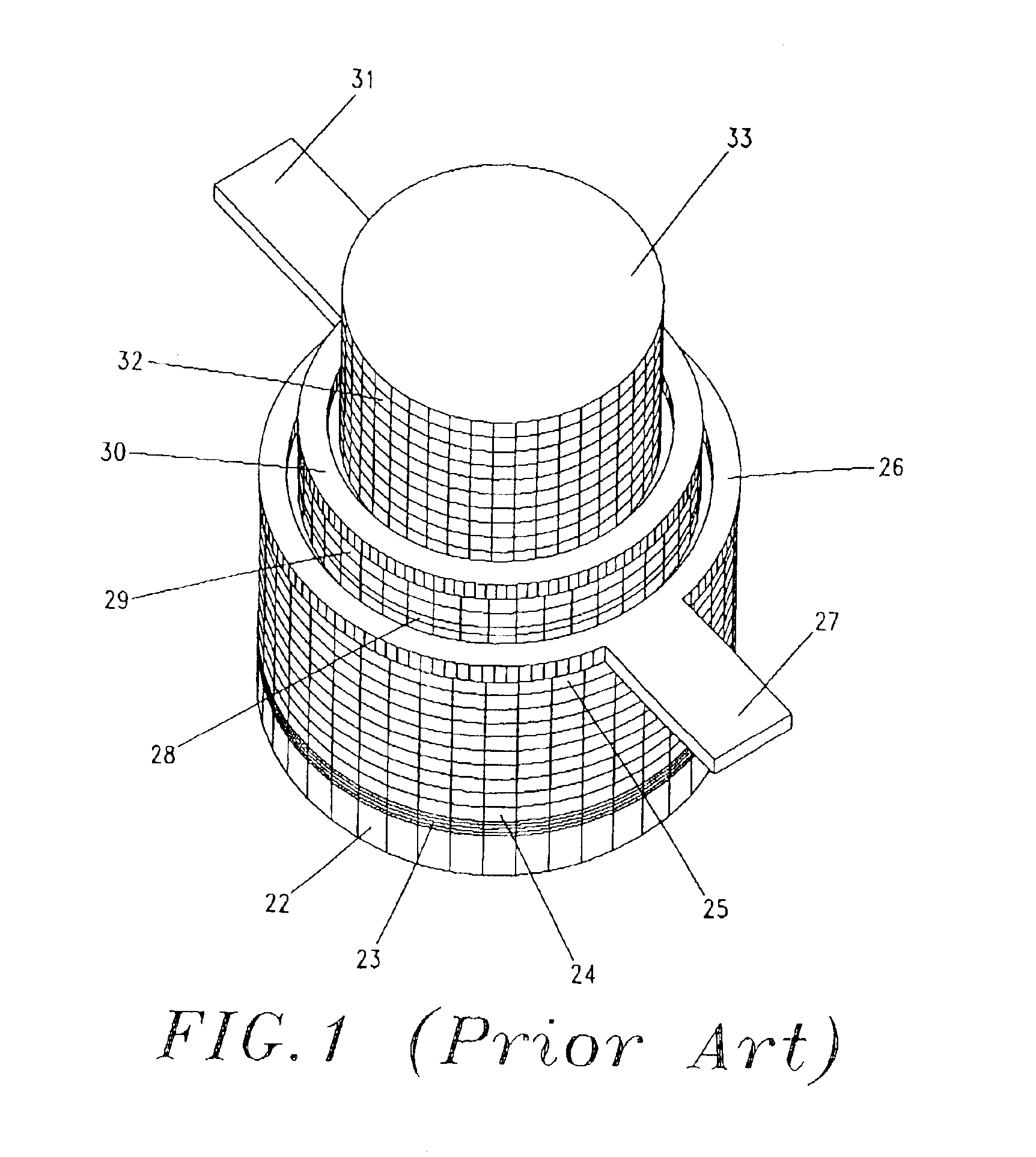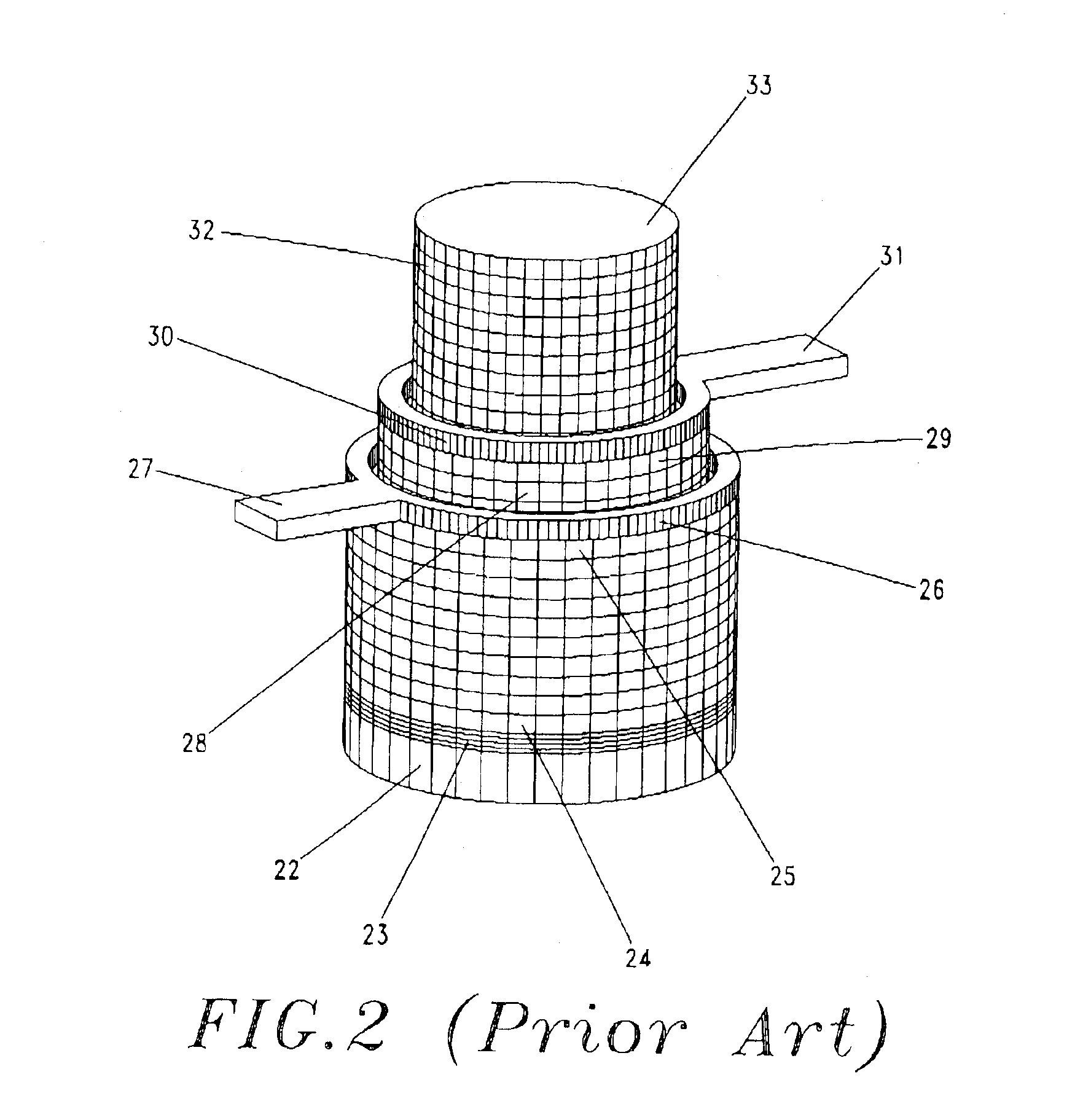FCSEL that frequency doubles its output emissions using sum-frequency generation
a semiconductor laser and sum-frequency generation technology, applied in semiconductor lasers, active medium materials, optical resonator shape and construction, etc., can solve the problems of difficult and costly phase-matching within birefringent crystalline materials, difficult and costly production of these materials, and the emission output is difficult to control
- Summary
- Abstract
- Description
- Claims
- Application Information
AI Technical Summary
Problems solved by technology
Method used
Image
Examples
Embodiment Construction
As a preferred embodiment of the present invention, a frequency-doubled sum-frequency generating FCSEL laser-diode, in contrast to the presented prior art, is constructed using compound semiconductor material that comprise various combinations of elements listed in columns III-V of the ‘Periodic Table of Elements’. For example, using a method of epitaxial deposition a compound semiconductor material such as GaAs, AlGaAs, GaInAsP, AlGaInP, GaInAsP, etc. may be utilized as construction material during the deposition of the present invention's active-regions.
Moreover, while a compound semiconductor material such as GaAs, GaAsP, etc., may be utilized as the semiconductor material that provides for a lattice matched substrate wafer. Further, a frequency-doubled sum-frequency generating FCSEL laser-diode will comprise a multitude of layered structures; e.g., a cavity, the reflectors, etc. Wherein, the multitude of layered structures are epitaxially deposited upon the top outermost surface...
PUM
 Login to View More
Login to View More Abstract
Description
Claims
Application Information
 Login to View More
Login to View More - R&D
- Intellectual Property
- Life Sciences
- Materials
- Tech Scout
- Unparalleled Data Quality
- Higher Quality Content
- 60% Fewer Hallucinations
Browse by: Latest US Patents, China's latest patents, Technical Efficacy Thesaurus, Application Domain, Technology Topic, Popular Technical Reports.
© 2025 PatSnap. All rights reserved.Legal|Privacy policy|Modern Slavery Act Transparency Statement|Sitemap|About US| Contact US: help@patsnap.com



